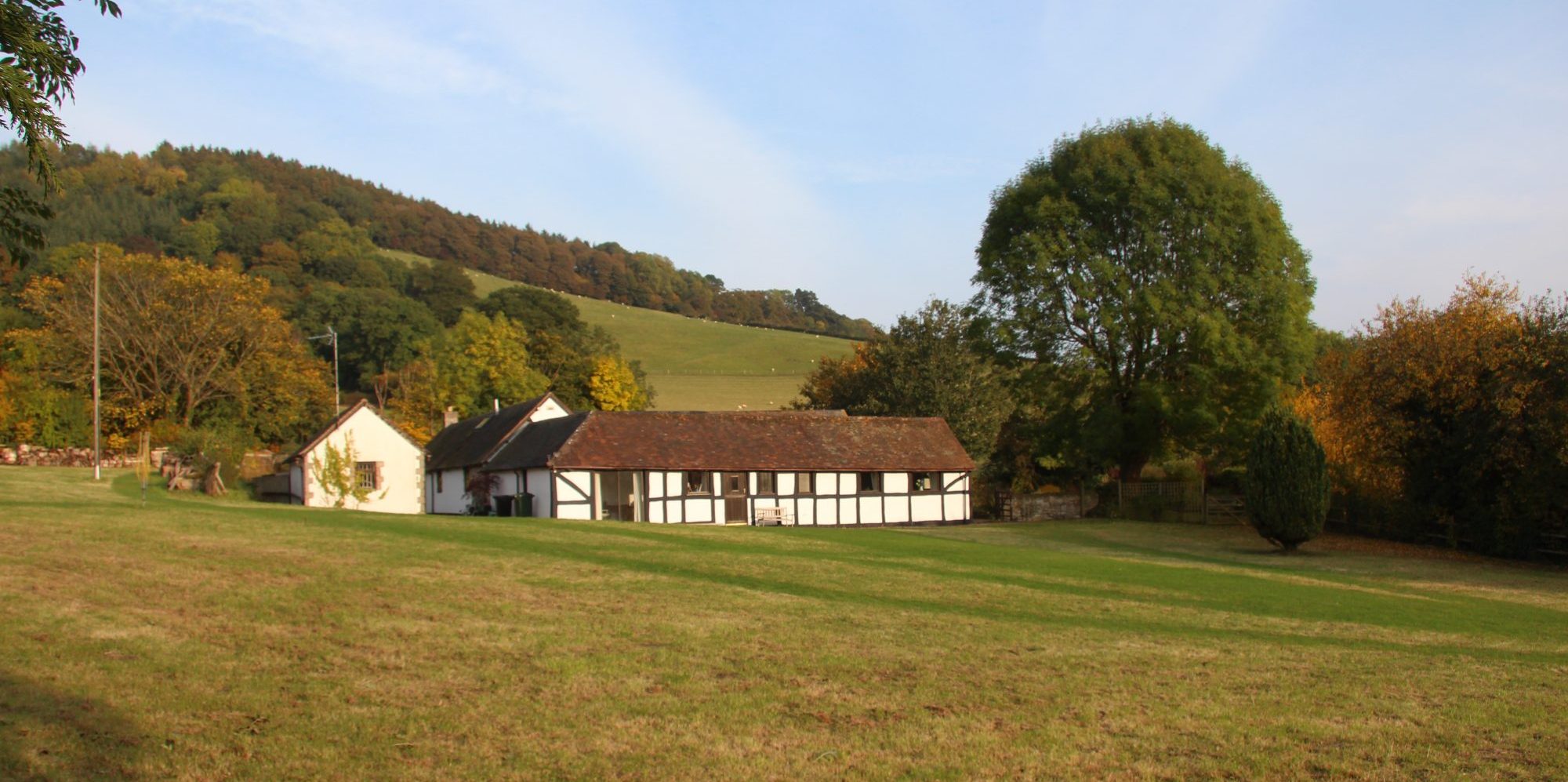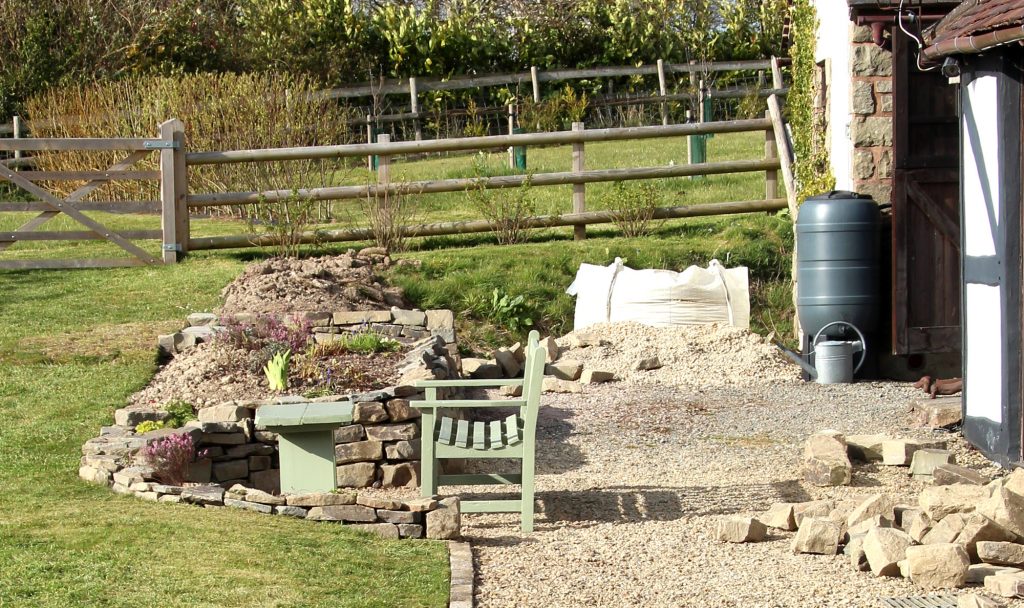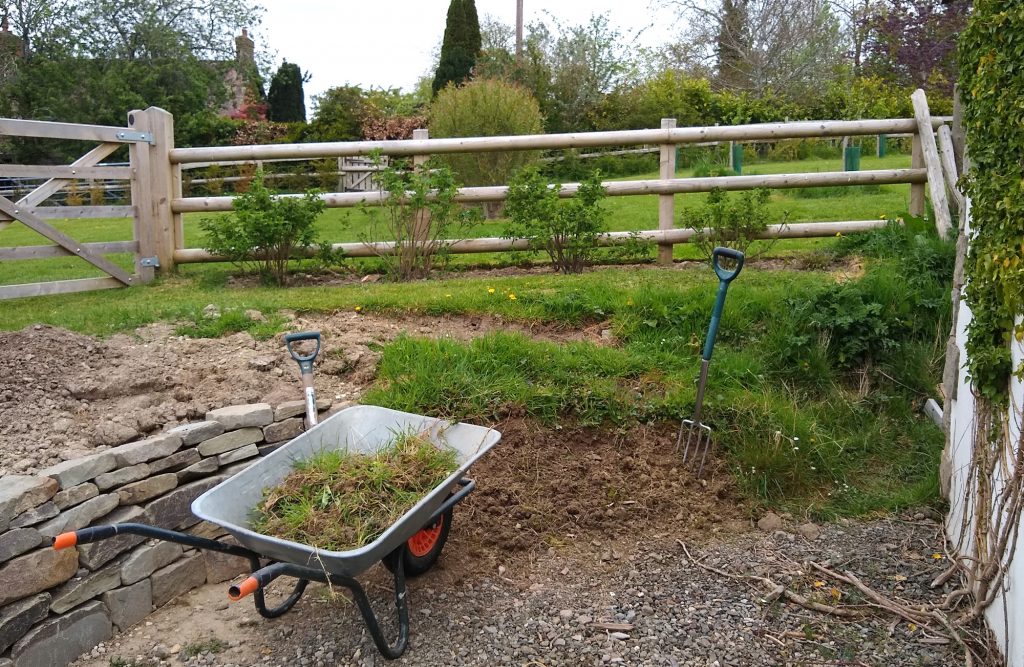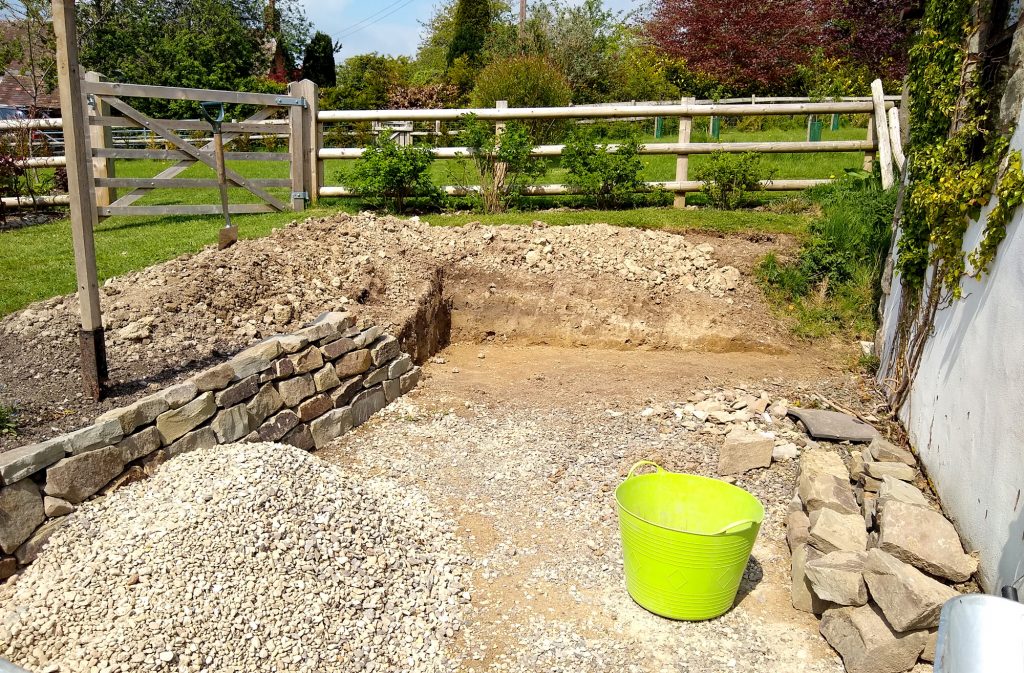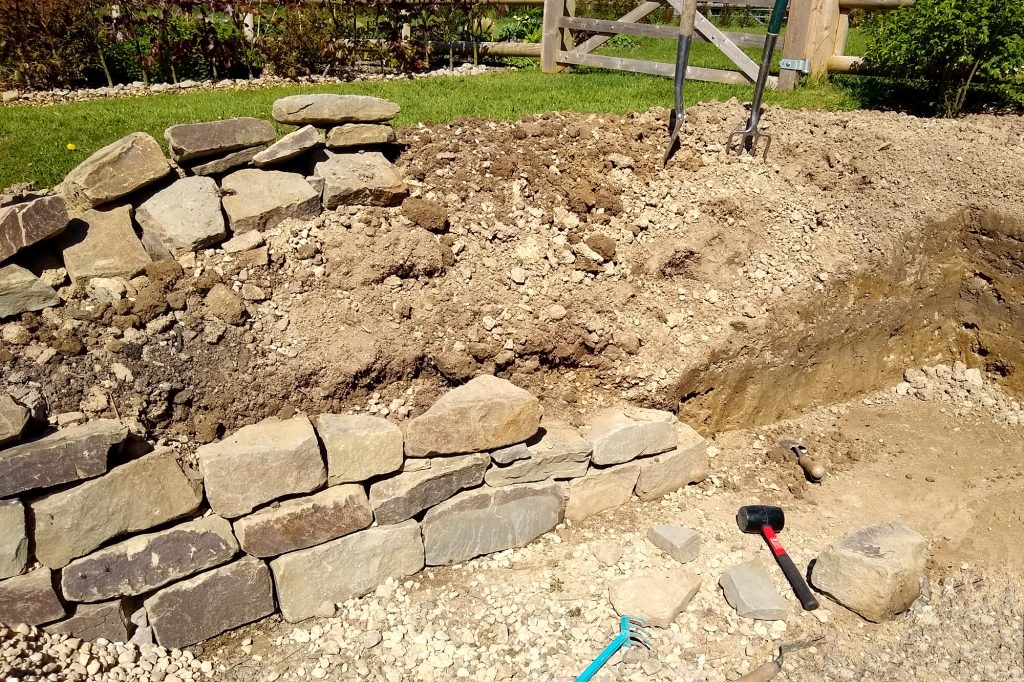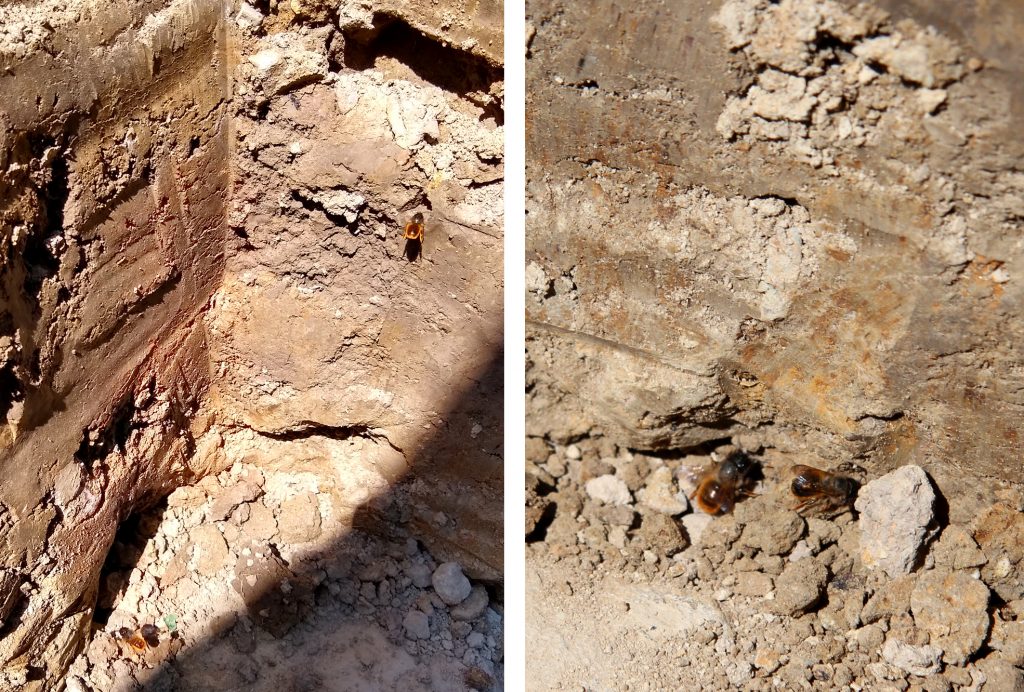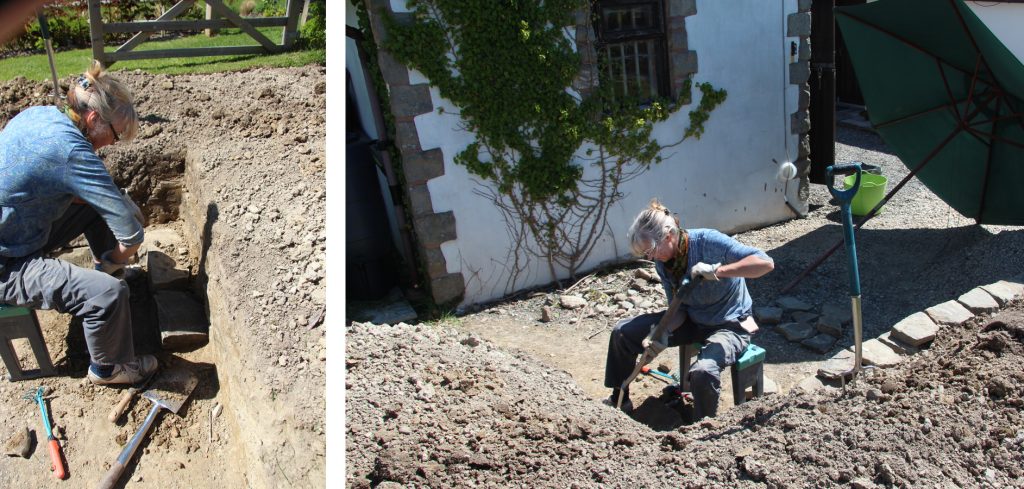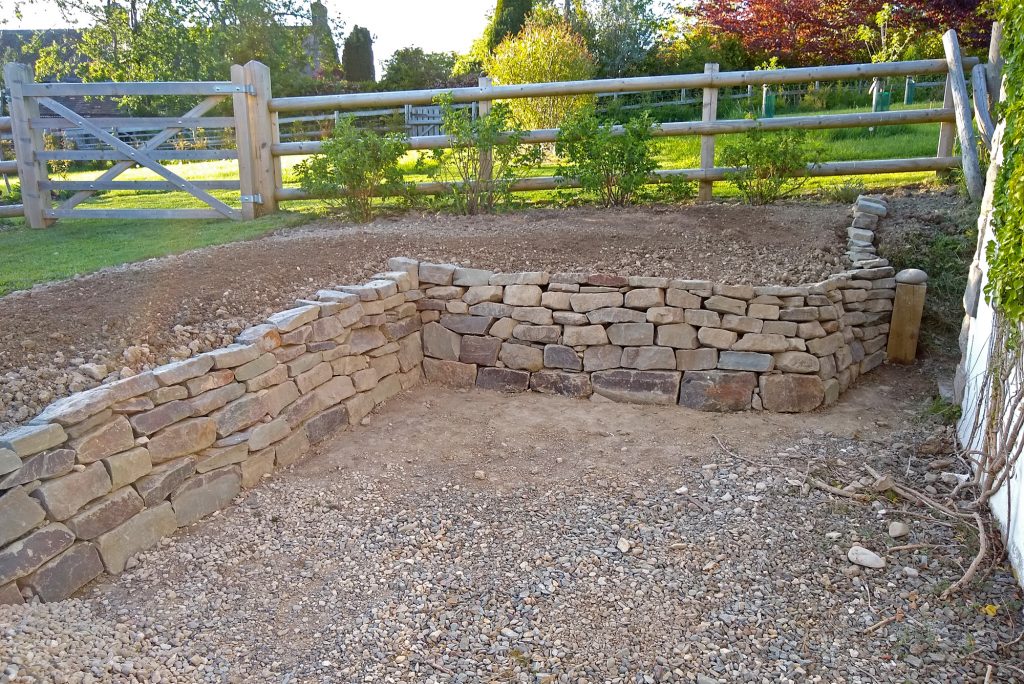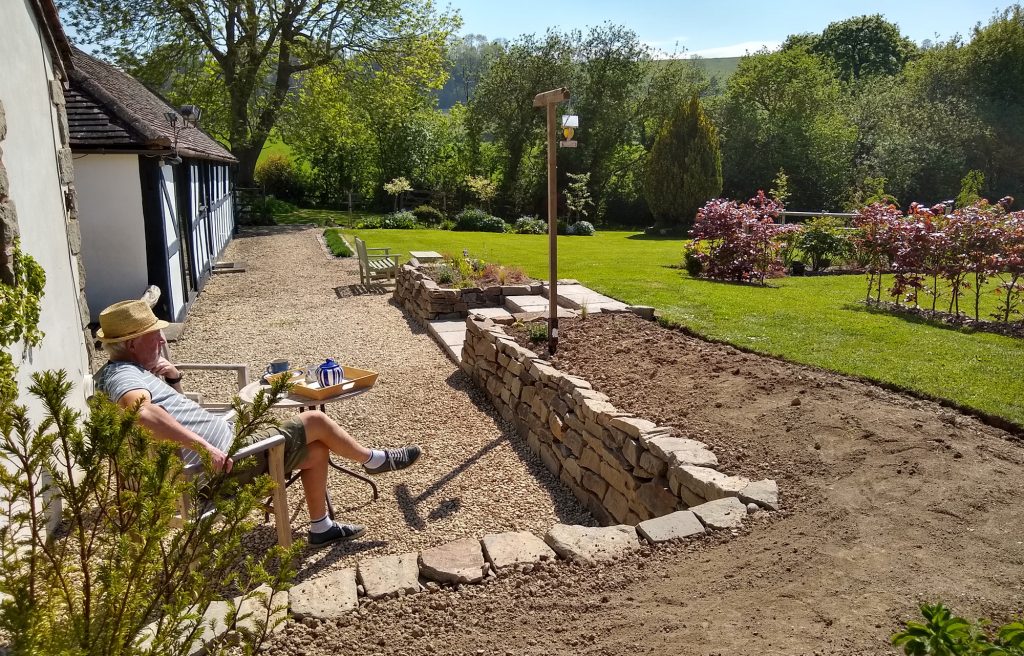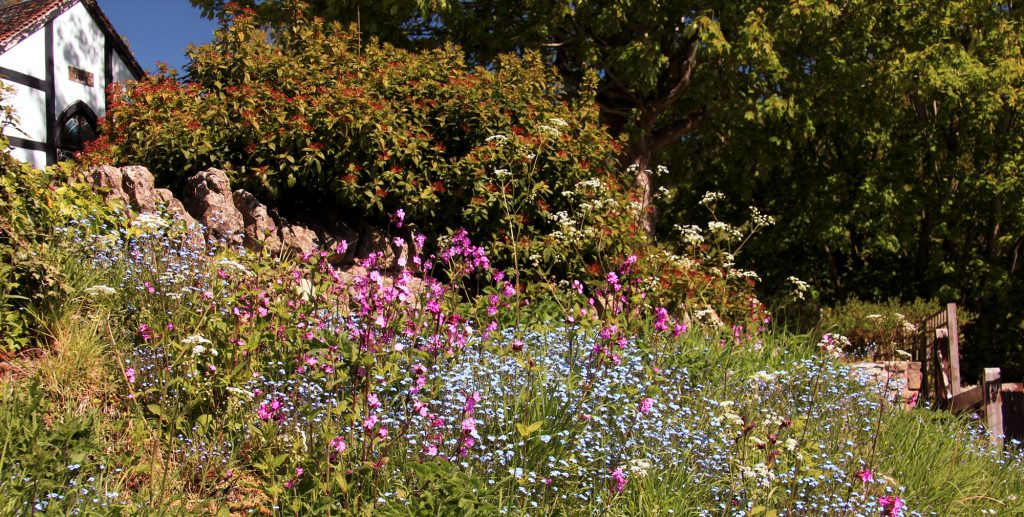
It is always a wonder how much and how quickly the garden changes through April to May; wandering past the abundance of new growth on a sunny spring day really does lift one’s spirit. The bank outside our gate seemed suddenly to be awash with a profusion of forget‑me‑nots and red campion taking over from the primroses and snowdrops, with tall stiff spikes of cow parsley and the beginnings of diverse attractive grasses, all set against the old stone wall. I love this bank, and as we are rarely leaving home this spring, I have been more aware of it changing. Although it is a natural bank, in which I do no planting, it does need managing. Brambles and stinging nettles would both too readily take over; we have already had one session cutting them back – early in March – and this will have to be repeated often – but after the wildflowers have set seed.
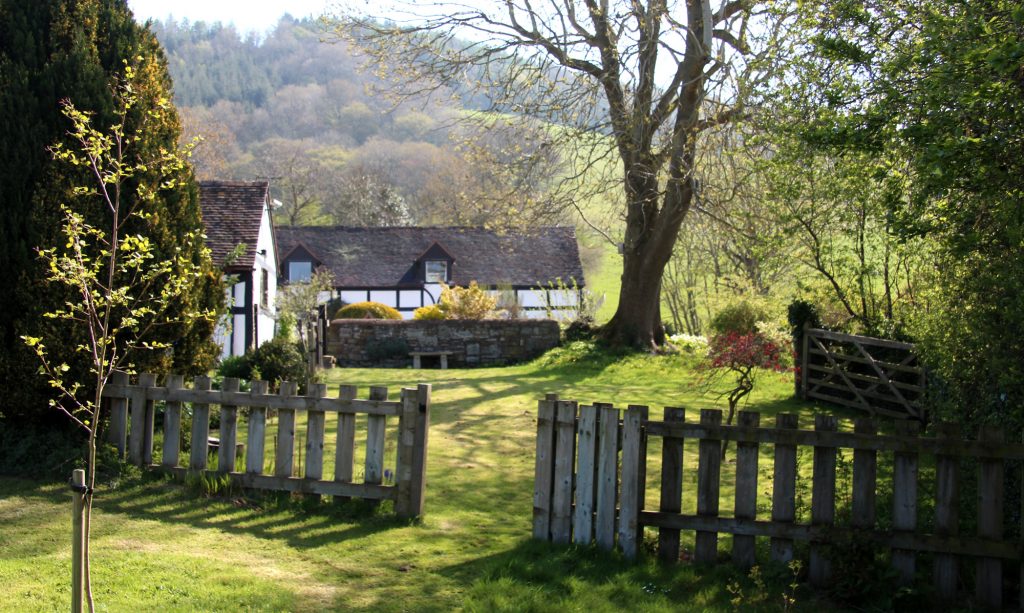
Another of the joys of spring is the long shadows cast as the days lengthen. As we have developed the garden, I have been delighted with the different views we have created, and the almost magical effects created by the sunlight streaming through. Looking back across the fence which separates our small ‘Woodland Walk’ from the shady garden is one of my favourites – creating such a calming and satisfying feeling in my soul.
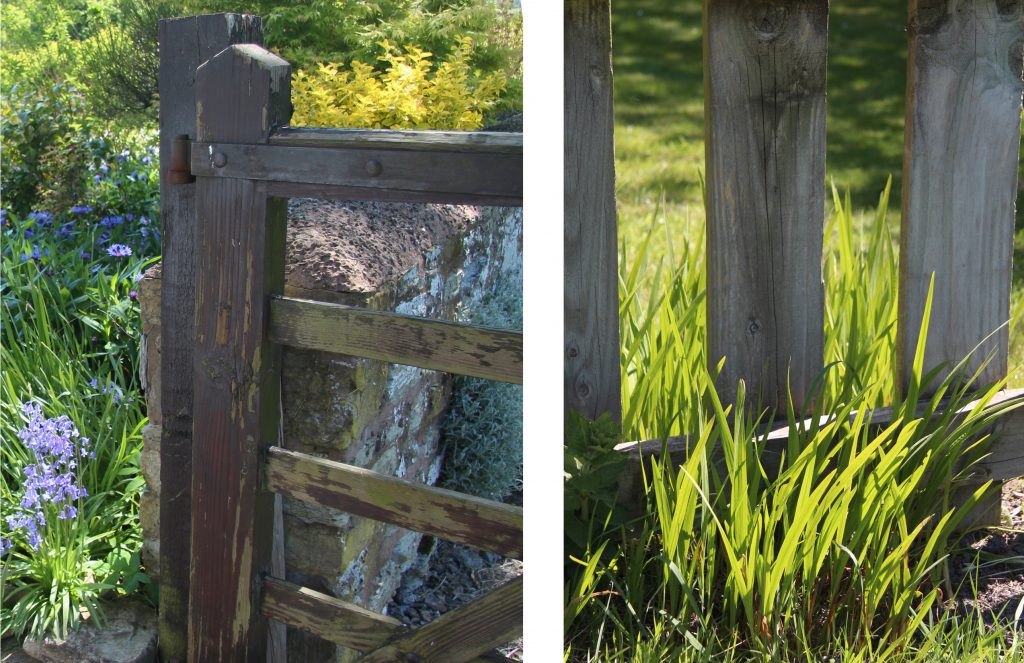
But joy can also be found in the details. We are fortunate to have inherited an old wall which would once have surrounded a farmyard, and a well‑weathered gate, which has far too much character to be sanded and re‑painted. The freshness of foliage contrasting to the textures of the wall and gate is one of those small details which, by staying home this spring, we have been able to fully appreciate.
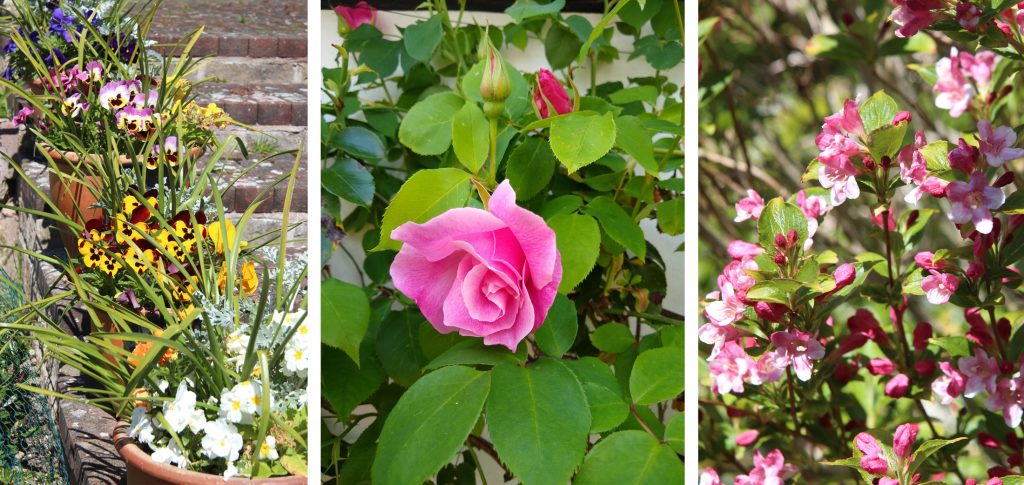
The winter pansies in the pots on the steps leading to the front door, are still flowering profusely, which has stopped me from being tempted to plant out my over‑wintered geraniums – as we have recently had a few hard frosts, that could have spelt disaster. The geraniums can wait a couple more weeks, giving more time to enjoy the pansies. The spring flowering shrubs, like weigela, are full of flower and I am gratified and relieved that the pink climbing rose is full of buds. I am always nervous about pruning this rose, as it was flowering so spectacularly on the day we moved in. I try to follow the pruning guidelines but am never sure I have done the right thing. Only a few weeks ago I was examining it, convincing myself I had got it wrong and there’d be no flowers this year at all. But no worries, a gush of spring growth has produced rose buds in abundance.
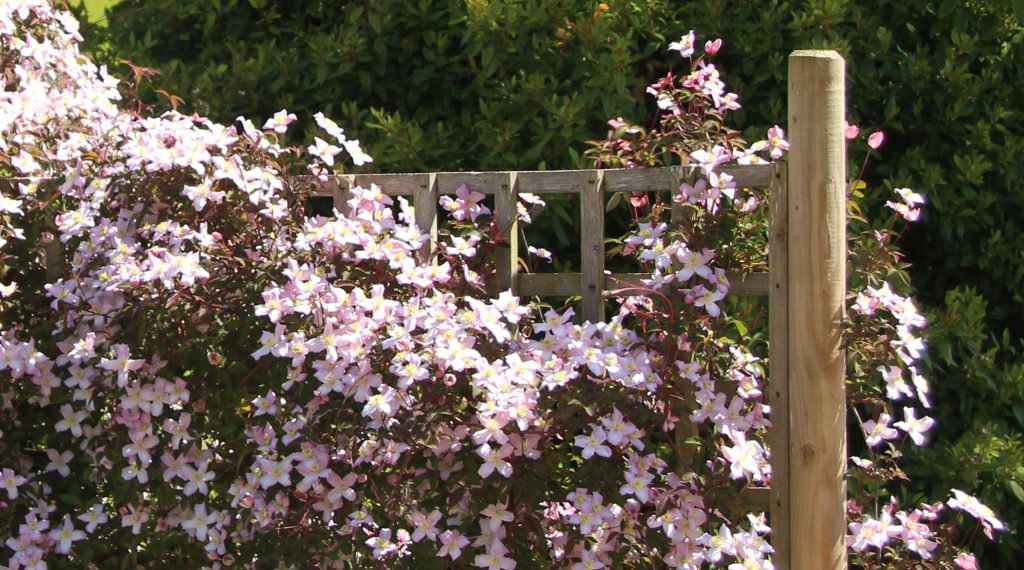
I have no worries, however, when it comes to pruning clematis montana. We have two, mature, large rambling montanas, on trellis on the main building in the courtyard. The growth they put on each year is phenomenal – but pruning is just a matter of hacking it back to keep it under control (and out of the gutters) then the next spring they are again smothered in blooms. Last year we put up some trellis for the pink montana to cover in order to screen our cars from the lane – the trellis is currently covered in pink flowers complemented by the ruby tinged foliage. Another spring delight.
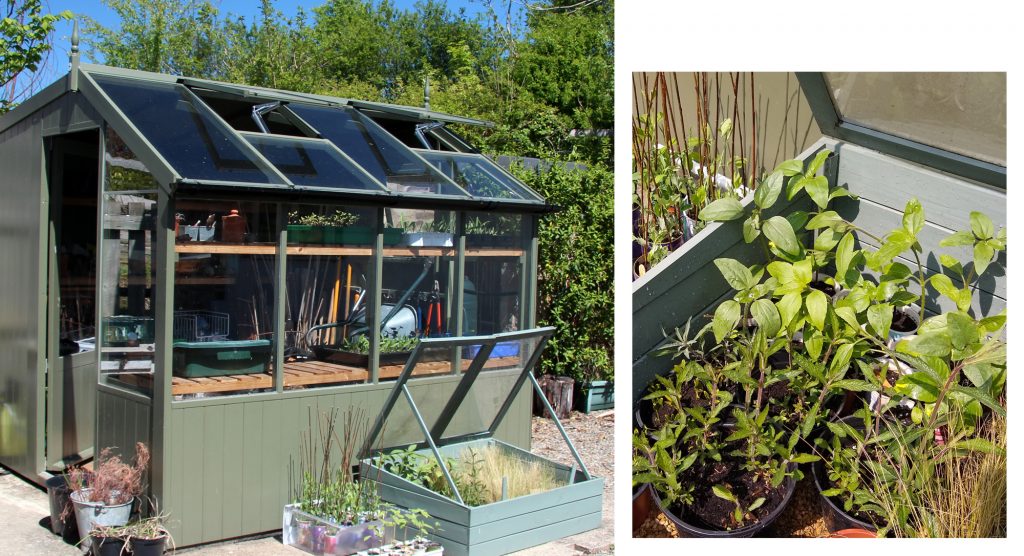
In my potting shed and cold frame, I have a larger selection of seeds and cuttings growing than I usually manage. I had limited compost, so mixed in some of the grit and earth sieved when doing the wall. This gave good drainage and consequently plenty of germination – in fact a worryingly large amount of germination. I was puzzled at first, with such a range of seedlings in each seed tray – until the truth dawned – the grit was full of weed seeds! I spent some time peering at the small seedlings trying to determine which were the ones I was trying to cultivate and which were the weeds; I think I identified the weeds, and pulled them out.
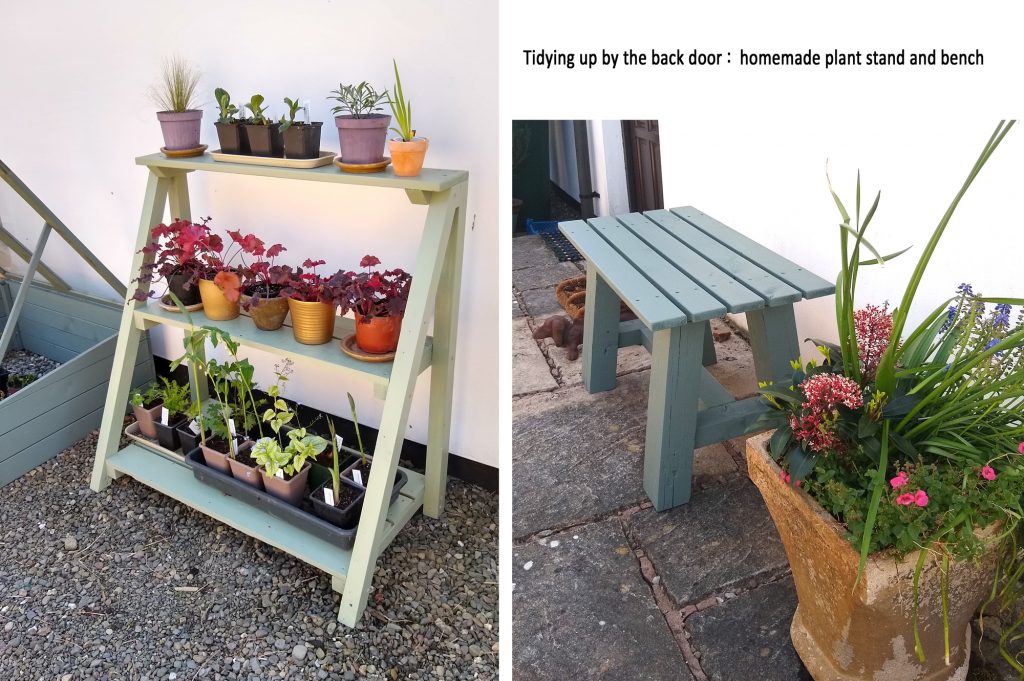
I had divided a heuchera last summer and the young plants are now growing well and looking splendid on my new plant stand. But they and the summer flowering seedlings will have to wait a little longer before I plant them out – partly due to the late frosts, but more particularly because the garden this year is proving to be of special interest to the local rabbit population. I couldn’t bear for my five home grown heucheras to be devoured. I am trying to protect small plants in various ways and we are attempting to rabbit proof our boundary – not an easy task. This week we spotted a healthy‑looking fox, wandering across the field opposite – hopefully he is doing his bit to assist us.
